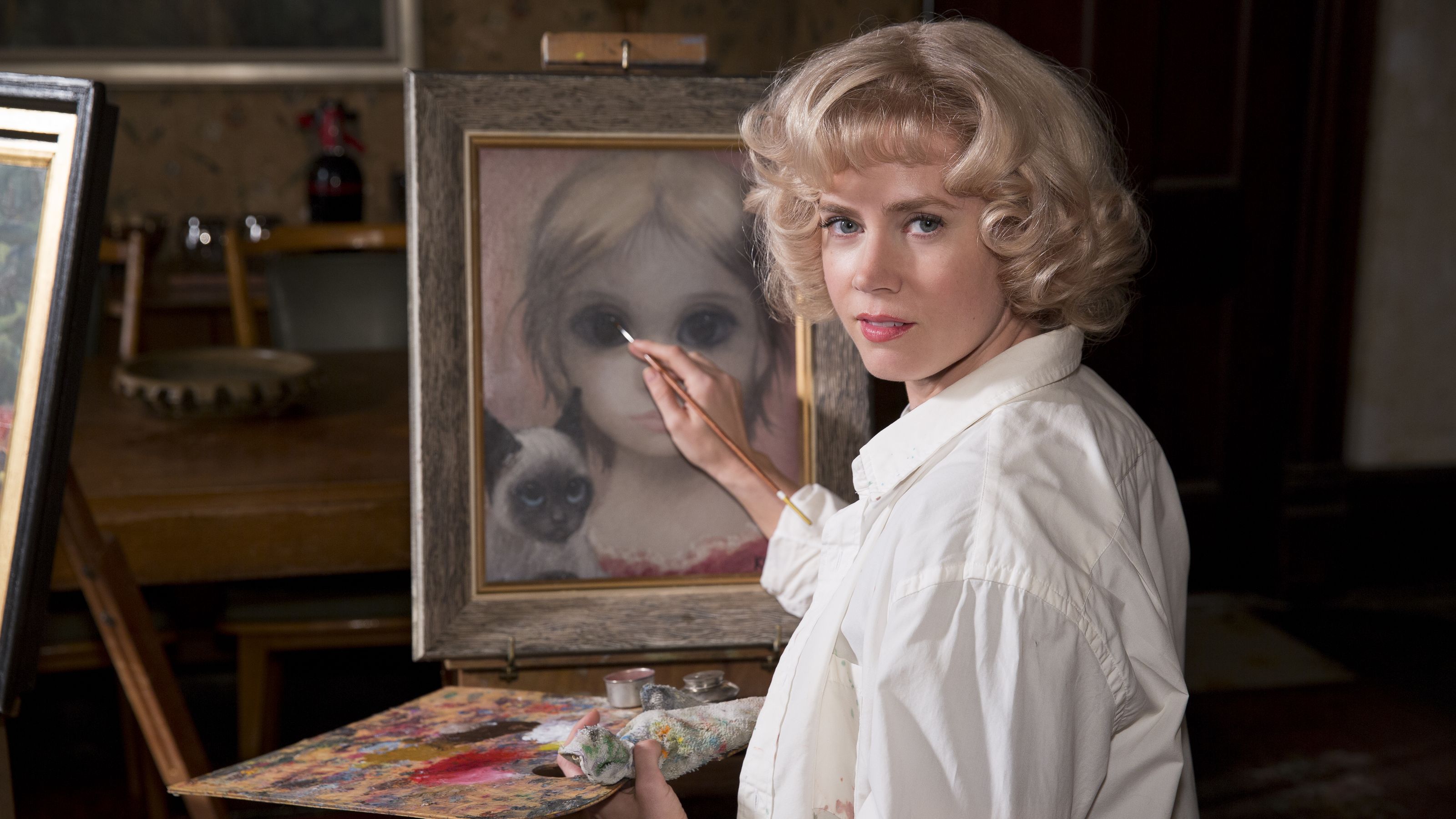It’s easy to see why Tim Burton was attracted to Big Eyes. The paintings flirt with the weird line Burton lives to criss cross. However, the director mostly plays it safe to honor the source material, leaving his directing fate to the so-so screenplay.
The painter of the Big Eyes is Margaret (Amy Adams), who paints them that way because eyes are her window the soul. Margaret is actually pretty brave for the 1950’s: she leaves her husband with her daughter (Madeleine Arthur) for San Francisco. There, she provides for her daughter best she can and tries to sell her Big Eyes on the side. She ends up being swept off her feet by fellow painter Walter Keane (Christoph Waltz), who is attracted to Margaret’s talent and sweet nature. Walter soon discovers that people like Margaret’s art, but peddles it as his own as his best gifts are at sales and storytelling. At first, the sales are a blessing for Margaret and her daughter, but slowly the lifestyle built around lies starts to resemble a house of cards.
Burton nails the tone and pacing of Big Eyes. This is not morose Shakespearean fare, but a delightful tryst with inner complications. The painting themes allows Burton to use some delightful pastoral flourishes of color from time to time, and the setting gives the go-go screenplay some thematic resonance. The picture moves briskly but smoothly, establishing a setting and situation and then quickly moving on. An introspective type could see the pacing like Walter himself; on first glance it keeps Big Eyes looking great, but if you really pay attention the choices are there to cover up some blemishes in the story.
Scott Alexander and Larry Karaszewski want to set the record straight when it comes to Margaret and do right by her. As such, it is important for her to look like a beacon of pious anger. Such an evolution undercuts the work the first hour does setting up the Keanes’ relationship and just how complicated it actually is. The third act’s devolution of Walter leads to some very amusing cathartic moments that undercut his character for a happy ending, leaving a bit of a nasty taste in your mouth. In addition, Walter’s rendering robs the story of any stakes whatsoever going into the courtroom scenes as the screenplay telegraphs what is going to happen.
Amy Adams and Christoph Waltz represent the diametric opposites for acting types. Adams is wonderful finding subtle ways to grow Margaret from meek to powerful. In the hands of a lesser actor, she would be screaming at Walter by the end of the film, but Adams exhibits how to grow a character’s confidence organically and slowly. Waltz starts at over the top and bubbles over like a soda poured too quickly into a glass. The beginning scenes use Waltz’s charisma to attract Margaret, a necessary moment that Waltz sells easily. After that, he quickly ceases to be human and becomes a plot device; had the writers dialed him back to a consistent level, Waltz’s performance would come across less hammy. Other characters show up and add some fun to the proceedings, especially Jason Schwartzman and Terence Stamp who relish the chance to make fun of critics.
Big Eyes should end up a great cable film. While not a revolutionary movie, it is lots of fun and will be easily rewatchable. You can also develop a drinking game: if Christoph Waltz acts like his character in Inglorious Basterds, take a shot.

